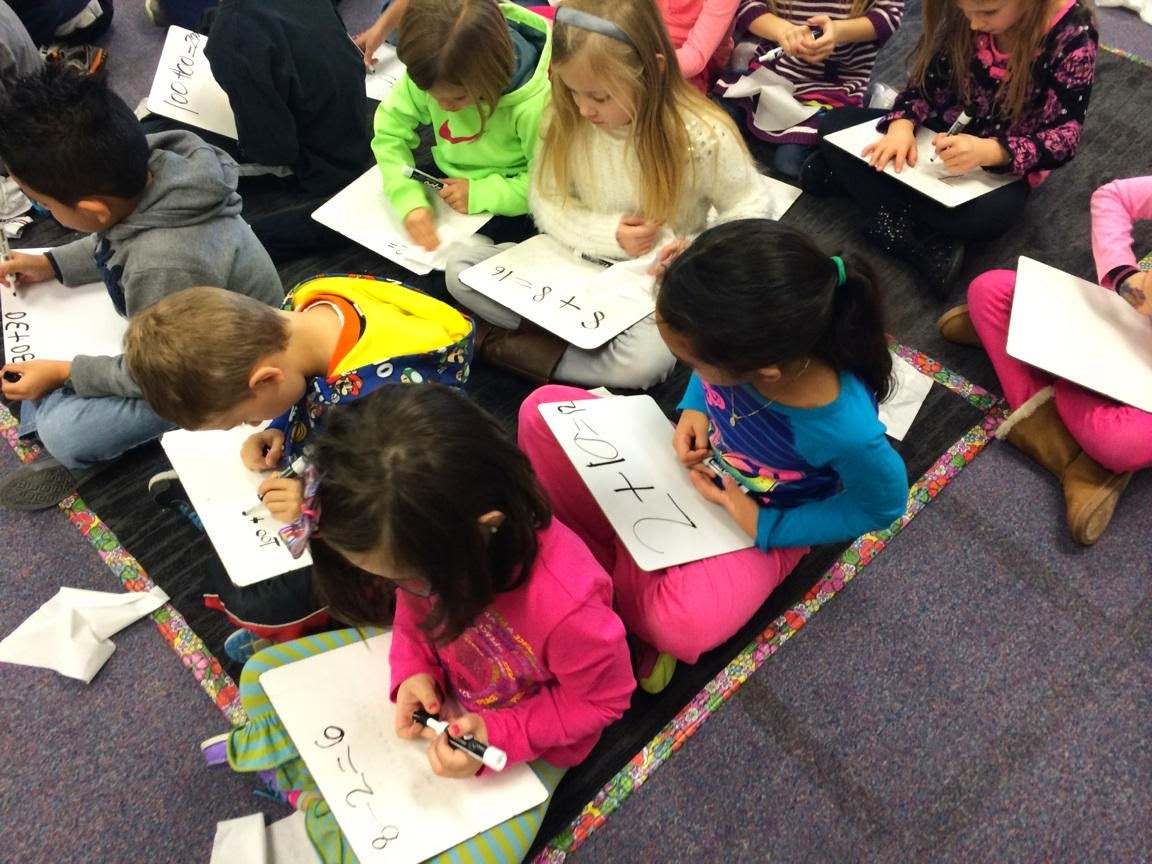1.0A.7: Understand the meaning of the equal sign, and determine if equations involving addition and subtraction are true or false. For example, which of the following equations are true or false? 6 = 6, 7 = 8 - 1, 5 + 2 = 2 + 5, 4 + 1 = 5 + 2.
1.0A.8: Determine the unknown whole number in an addition or subtraction equation relating three whole numbers. For example, determine the unknown number that makes the equation true in each of the equations 8 + ? = 11, 5 + _ - 3, 6 + 6 = _.
Equations
 |
| We are getting good at writing equations! |
 |
| Here are some important math terms to know when writing equations. |
For example, is the equation 5 + 2 = 4 + 3 true? Why?
First, we need to solve each side to determine if the sides are the same. We can use manipulatives, draw cubes, or use ten frames, to name a few strategies, to solve each side.
We determine that the equation is true because 7 = 7.
Another way we can look at equations being true or false is by thinking of them as a balance (or scale). Think of the way a teeter totter works. In order for both sides to be level, the numbers on each side of the center ( = sign) have to be the same. Just like an equation, a balance has to be equal on both sides.
 |
| Is this equation TRUE or FALSE? |
 |
| Drawing a ten frame to solve each side, helps us determine that this equation is FALSE. Why? Each side of the equation is a different number. |
 |
| This equation is TRUE. The numbers on both sides of the equal sign are the same (7). |
 |
| This equation is FALSE. By drawing a picture, we can see that one side does not equal the other. |
Missing Numbers
We are also learning to find the missing number to make equations true.
For example, 7 + _ = 12.
How can we find the answer? We may know that math fact, but if we don't, we can solve it in several ways. We might start with 7 and then count on to 12. We would then find that we've counted up 5.
-We can always use the number line to get started thinking.
-We can also draw it, or use ten frames to count.
-We will find that the missing number is 5.
-We can also use related facts to find missing numbers. If we know a fact family, it can help us find missing numbers. For example, if the equation is 9 + _ = 15, we can think of another fact we know, like 15 - 9 = _. This addition fact has the same numbers. We can figure out that the missing number is 6. The numbers 15, 9 and 6, can all be used to create a fact family: 2 addition problems and 2 subtraction problems ( 9 + 6 = 15, 6 + 9 = 15, 15- 6 = 9, 15 - 9 = 6).
REMEMBER to check out the "Web Wednesday" tab on this math blog, for online activities to do. This week's Wednesday assignment is about balancing equations. Have fun!
Have a wonderful and warm week!
Mrs. Bright, Miss Christensen, Miss Gianakakos, and Miss Steimel


.jpg)
No comments:
Post a Comment